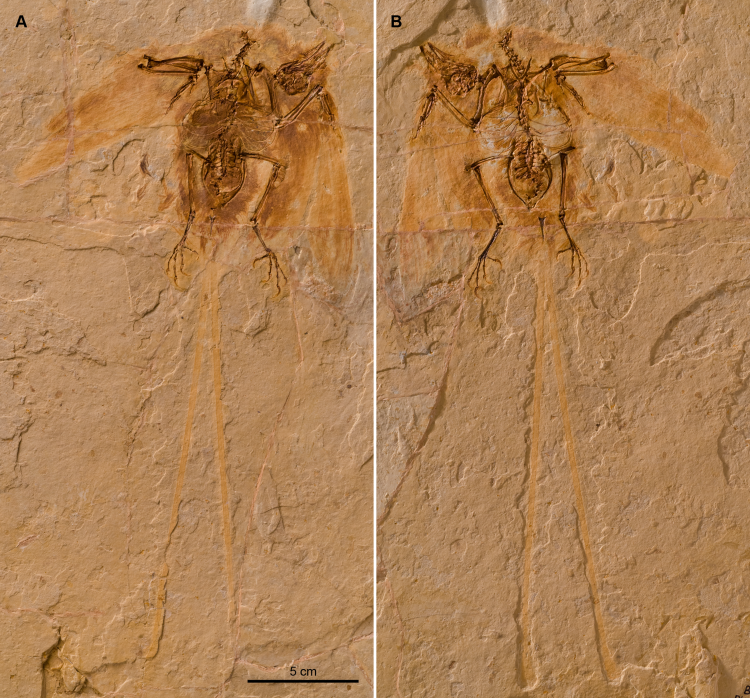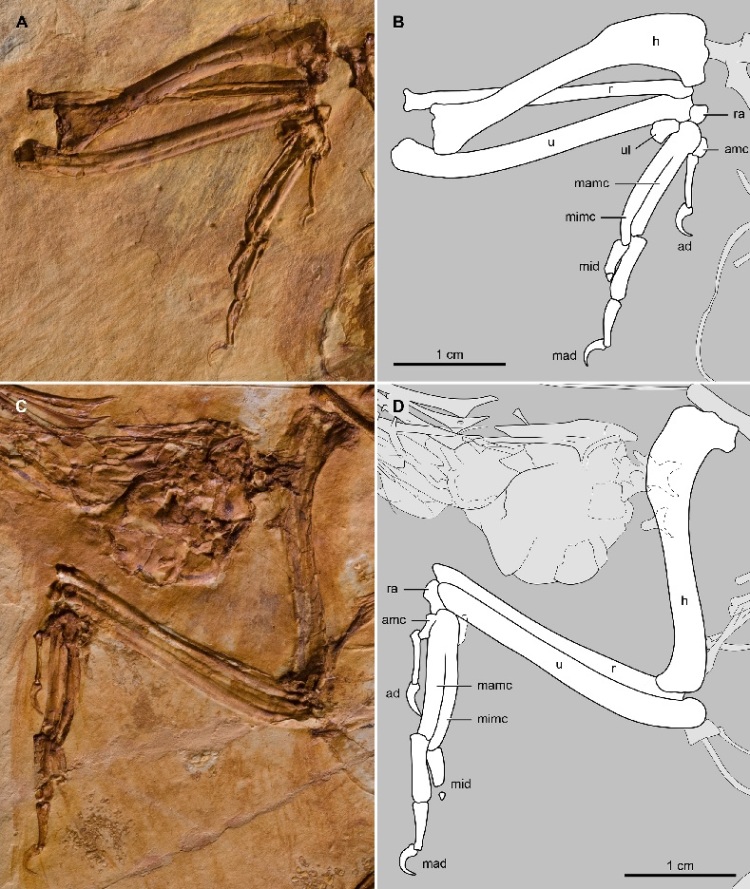
H.P. Lovecraft’s love for astronomy is well known. As an amateur astronomer, Lovecraft attended several lectures from leading astronomers and physicists of his time. In 1906 he wrote a letter to the Scientific American on the subject of finding planets in the solar system beyond Neptune. Around this time he began to write two astronomy columns for the Pawtuket Valley Gleaner and the Providence Tribune. He also wrote a treatise, A Brief Course in Astronomy – Descriptive, Practical, and Observational; for Beginners and General Readers. In several of his astronomical articles he describes meteors as “the only celestial bodies which may be actually touched by human hands”. But Lovecraft was also obsessed with the concept of deep time, so geology and paleontology were also present in his writings.
Lovecraft’s monsters are certainly titanic, biologically impossible beings, from dimensions outside our own. He began conjuring monsters almost from the start of his career. In “The Nameless City”, published in the November 1921 issue of the amateur press journal The Wolverine, and often considered the first Cthulhu Mythos story, he describes an ancient race of reptiles that built the city: “They were of the reptile kind, with body lines suggesting sometimes the crocodile, sometimes the seal, but more often nothing of which either the naturalist or the palaeontologist ever heard.”

Panorama of Ross Island showing Hut Point Peninsula (foreground), Mount Erebus (left) and Mount Terror (right), Antarctica. Photo: John Bortniak, NOAA
According to his biographer S. T. Joshi, Lovecraft was fascinated by Antarctica since an early age. Much of this fascination is recognizable in his famous novel “At the Mountains of Madness”, written in 1931. The novel was rejected by Weird Tales and finally was published by Astounding Stories in a serial form in 1936. “At the Mountains of Madness” is told from the perspective of William Dyer, a geologist from Miskatonic University who flies into an unexplored region of Antarctica. He’s accompanied by Professor Lake, a biologist, Professor Pabodie, an engineer, and some graduate students. The basic plot of the novel is the discovery of the frozen remains of bizarre entities from the deep space and their even more terrifying “slaves”: the shoggoths. The story could be divided in two parts. The first one is particularly rich, detailed and shows an impressive scientific erudition. This is clear in the following paragraph when he describes something that Professor Lake found: “He was strangely convinced that the marking was the print of some bulky, unknown, and radically unclassifiable organism of considerably advanced evolution, notwithstanding that the rock which bore it was of so vastly ancient a date—Cambrian if not actually pre-Cambrian— as to preclude the probable existence not only of all highly evolved life, but of any life at all above the unicellular or at most the trilobite stage. These fragments, with their odd marking, must have been 500 million to a thousand million years old”.
Of course, one of the most fascinating parts of the novel is the description of the Elder Things: “Cannot yet assign positively to animal or vegetable kingdom, but odds now favour animal. Probably represents incredibly advanced evolution of radiata without loss of certain primitive features. Echinoderm resemblances unmistakable despite local contradictory evidences. Wing structure puzzles in view of probable marine habitat, but may have use in water navigation. Symmetry is curiously vegetable-like, suggesting vegetable’s essentially up-and-down structure rather than animal’s fore-and-aft structure. Fabulously early date of evolution, preceding even simplest Archaean protozoa hitherto known, baffles all conjecture as to origin.” According with S.T. Joshi, Lovecraft based his description of the Elder Thing in the fossil crinoids drawn by E. Haeckel in Kunstformen der Natur.

E. Haeckel’s Kunstformen der Natur (1904), plate 90: Cystoidea. From Wikimedia Commons
“The Shadow Out of Time” (1935) was H. P. Lovecraft’s last major story. It’s told from the perspective of Nathaniel Wingate Peaslee, a professor of political economy at Miskatonic University. During five years, this man suffers a bizarre form of amnesia followed by vivid dreams of aliens cities in ancient landscapes. Later, Peaslee discovered that a small number of people throughout history suffered the same type of amnesia. They were possessed by the Great Race, a group of cone shaped creatures who developed the technique of swapping minds with creatures of another era with the purpose of learn the secrets of the Universe. Peaslee describes the gardens that surround the cities of his visions with detail. There was calamites, cycads, trees of coniferous aspect, and small, colourless flowers: “The far horizon was always steamy and indistinct, but I could see that great jungles of unknown tree-ferns, calamites, lepidodendra, and sigillaria lay outside the city, their fantastic frondage waving mockingly in the shifting vapours.”
Calamites was a genus of tree-sized, spore-bearing plants that lived during the Carboniferous and Permian periods (about 360 to 250 million years ago), closely related to modern horsetails. They reached their peak diversity in the Pennsylvanian and were major constituents of the lowland equatorial swamp forest ecosystems. The Cycadales are an ancient group of seed plants that can be traced back to the Pennsylvanian. Cycads have a stem or trunk that commonly looks like a large pineapple and composed of the coalesced bases of large leaves. Today’s cycads are found in the tropical, subtropical and warm temperate regions of both the north and south hemispheres.

Lepidodendron (fossil tree) on display at the State Museum of Pennsylvania, From Wikimedia Commons
Lepidodendron was a tree-like (‘arborescent’) tropical plant, related to the lycopsids. The name of the genus comes from the Greek lepido, scale, and dendron, tree, because of the distinctive diamond shaped pattern of the bark. The name Lepidodendron is a generic name given to several fossil that clearly come from arborescent lycophytes but are difficult to assign to one species. Fossil remains indicate that some trees attained heights in excess of 40 m and were at least 2m in diameter at the base. They were dominant components of swamp ecosystems in the Carboniferous and frequently associated with Sigillaria, another extinct genus of tree-sized lycopsids from the Carboniferous Period. The absence of extensive branching and the structure of the leaf bases are the principal feature that distinguish Sigillaria from other lycopsids (Taylor et al, 2009). Sigillariostrobus is the name assigned to the reproductive organs or cones of Sigillaria. Unlike Lepidodendron cones, which were attached attached individually near the tip of the branches, Sigillaria cones occurred in clusters attached in certain places along the upper stem.

Tunguska forest (Photograph taken by Evgeny Krinov near the Hushmo river, 1929).
“The Colour Out of Space” is a short story written by H. P. Lovecraft in 1927. The story is set in the fictional town of Arkham, Massachusetts, where an unnamed narrator investigates a local area known as the “blasted heath”. Ammi Pierce, a local man, relates him the tragic story of a man named Nahum Gardner and how his life crumbled when a great rock fell out of the sky onto his farm. Within the meteorite there was a coloured globule impossible to describe that infected Gardner’s family, and spread across the property, killing all living things. It’s the first of Lovecraft’s major tales that combines horror and science fiction. The key question of the story of course is the meteorite. Although “the coloured globule” inside the meteorite has mutagenic properties we cannot define their nature. But as Lovecraft stated once, the things we fear most are those that we are unable to picture.
“The Colour Out of Space” was published nineteen year after the Tunguska Event. On the morning of June 30, 1908, eyewitnesses reported a large fireball crossing the sky above Tunguska in Siberia. The object entered Earth’s atmosphere traveling at a speed of about 33,500 miles per hour and released the energy equal to 185 Hiroshima bombs. The night skies glowed and the resulting seismic shockwave was registered with sensitive barometers as far away as England. In 1921, Leonid Kulik, the chief curator for the meteorite collection of the St. Petersburg museum led an expedition to Tunguska, but failed in the attempt to reach the area of the blast. Later, in 1927, a new expedition, again led by Kulik, discovered the huge area of leveled forest that marked the place of the Tunguska “meteorite” fall. At the time, Kulik mistook shallow depressions called thermokarst holes for many meteorites craters. However, he didn’t find remnants of the meteorite, and continued to explore the area until World War II. In the early 1930s, British astronomer Francis Whipple suggested that the Tunguska Event was caused by the core of a small comet, while Vladimir Vernadsky, suggested the cause was a lump of cosmic matter. (Rubtsov, 2009). More than a century later the cause of the Tunguska Event remains a mystery.
References:
Lovecraft, H. P, “At the Mountains of Madness”, Random House, 2005.
Lovecraft, H. P, “The Dreams in the Witch House and Other Weird Stories”, Penguin Books, 2004.
Joshi, S. T. (2001). A dreamer and a visionary: H.P. Lovecraft in his time. Liverpool University Press, 302.
LONG, J. (2003): Mountains of Madness – A Scientist’s Odyssey in Antarctica. Jospeh Henry Press, Washington: 252
N. Taylor, Edith L. Taylor, Michael Krings: “Paleobotany: The Biology and Evolution of Fossil Plants”. 2nd ed., Academic Press 2009.
Kathy Willis, Jennifer McElwain, The Evolution of Plants, Oxford University Press, 2013







